"Design is thinking made visual." - Saul Bass
Visual communication is a discipline that crosses a wide range of disciplines such as Photography, Advertising, Illustration, Interaction Design, Information Design and Experience Design. This cross-fertilization in the visual communication discipline provides a coherent conceptual base and insights that can work effectively to address rapidly changing global and local contexts.
Unlike the traditional Graphic Designers, Visual Communication Designers today study the nature of visual information processing and comprehension and then intersect their learning with six key domains of visual communication design: aesthetic, functional, historical, symbolic, perceptual, and cultural. At Srishti, the discipline of Visual Communication focuses on providing core competency in the areas that help develop visual literacy, visual thinking, visual perception, imagery, and representation. Design processes, research methods, history and theories of design form the building blocks of education of a visual communication designer as the curriculum also approaches visual communication from a sociological/anthropological position with insights from semiotics.
The studios offered by Visual Communication Discipline can be broadly categorized as follows:
- Unpack Meaning
- Ways of analyzing meaning and communication using research, analysis and critical thinking.
- Theoretical study of Semiotics, Denotation, Connotation and Visual Symbolism
- Study of historical milestones, and its influences on ways of communication, Visual Culture and Visual Literacy.
- Construct Meaning
- Visual Narratives, Image Making, interaction of Type and Image to make meaning,
- Constructing and shaping meaning using Symbols, Icons, Pictograms, Motifs and Patterns
- Font Design, Data Visualization, Story Telling, Conceptual representation
- Interplay Meaning
- Explore varied media for visual expression
- Transformation of forms and meanings
- Examining Critical and Essential Influences
EXAMPLES OF STUDIOS AT VISUAL COMMUNICATION:
Studio: Patterns & Communication
In the visual arts, patterns are generally viewed as surface designs used as decoration and ornamentation. The course facilitates an understanding that patterns exist in all spheres of human activity and communications. They are a way in which we experience the world and decode meaning. How patterns can communicate various meanings and what are the underlying structures and rules that govern the formation of different kinds of messages was the main focus of this studio.
Students explored the patterns that emerge in a range of communication material through the lens of politics, economics and culture.
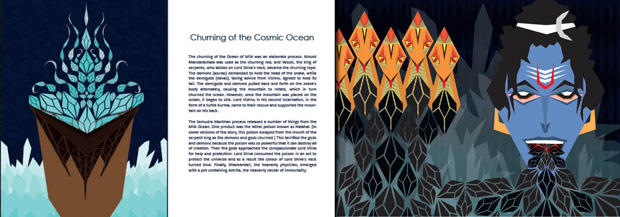
Book design inspired by geometric patterns.
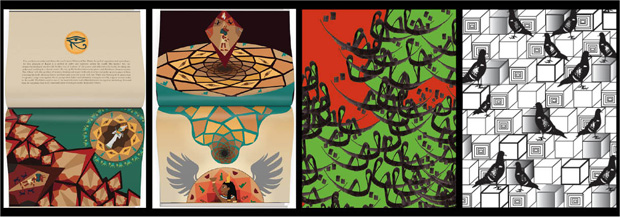
Book design inspired by cosmic patterns (on left) and, patterns created in the cultural and societal context.
Studio: Text & Image
This studio encourages students to analyze the interplay of text and pictures, revealing how words, space, images and forms can work together. Seeing the text versus reading the text, seeing the image versus reading the image were the key activities that resulted in books, posters and infographics. Students explored the role of typography and space while observing the diktats of Imagery and Visual Perception.
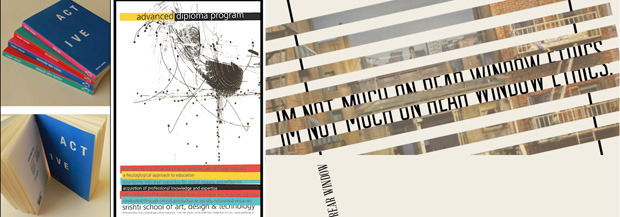
Books, Posters and Brochures designed by Srishti students in the Text & Image Studio.
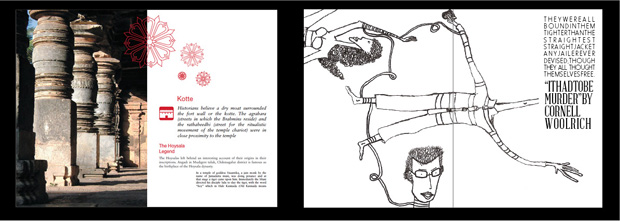
Book on Karnataka Tourism (Left), and, Self-initiated illustrated book (Right).
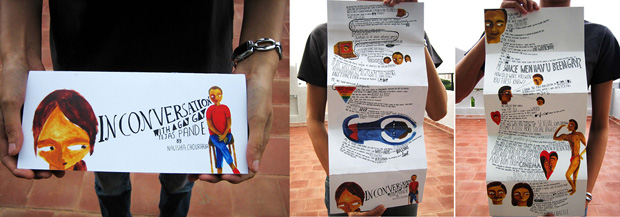
Social communication designed combining original illustrations and handwritten text in the form of posters and handouts.
Studios: Typography, Calligraphy and Letterform Design
Typography, Calligraphy and Letterform Design are 3 distinct areas of study. Each of the 3 studio is a practice with it’s own unique vocabulary and rules. Students begin by learning the Bauhausian and Swiss typography but soon move into exploring vernacular type, letterforms and calligraphy. Working within the contexts of global and local sensibilities, students are able to explore a wide-ranging aesthetic and communication devices within the realm of text but equipped with diversity of forms in typography, calligraphy and letterform design.
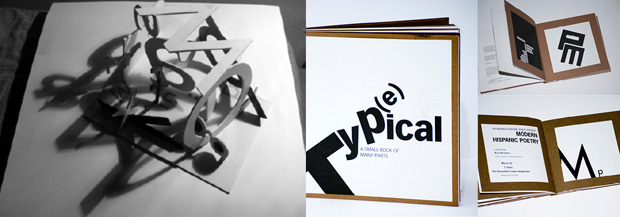
Typographic explorations in print and in 3-dimensional sculptural form.
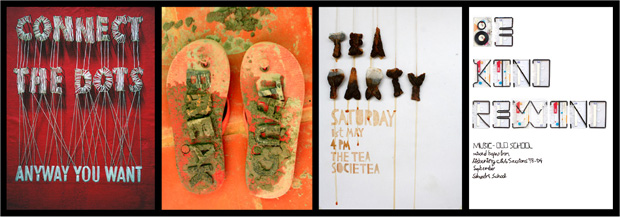
Posters showing students’ work in Experimental typography.
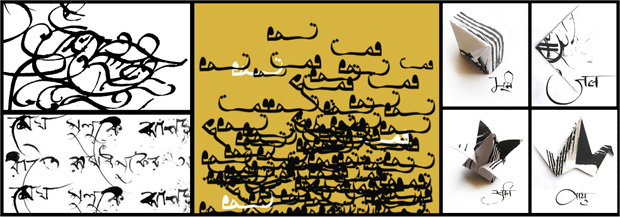
Calligraphic explorations in various Indian languages communicating Earth, Water, Air and Fire.
Studios: Packaging Design and Branding
Branding and Packaging are inseparable as they jointly create and establish a brand experience, constructing meaning through use of logo, colours and other visual elements. The objective of the Branding studio as well as Packaging studio is to engage students in the local businesses and economics and learn to brand them while considering the cultural, societal and historical contexts of its users and environments.
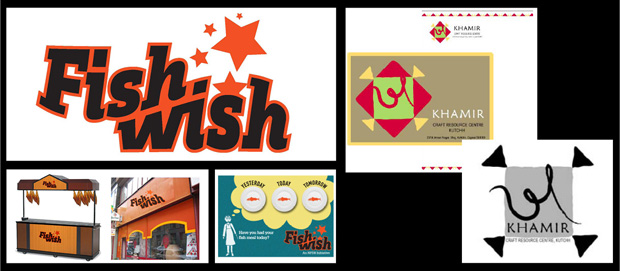
Branding for the retail outlet for Central Fishing Corporation of India. Branding for Khamir, an NGO working and promoting crafts of the Kutch region.
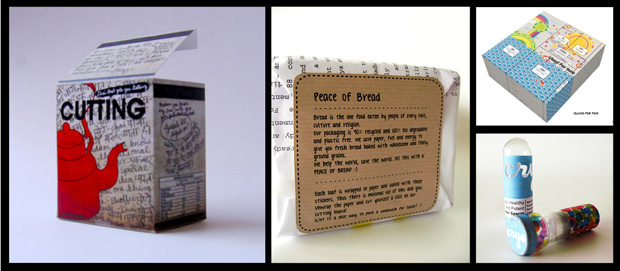
Packaging design for various products and services using variety of materials, recycled and new materials.
VC Projects: Treasured Islands Book
This was a collaborative project between ANET, Dakshin and Srishti. While ANET and Dakshin worked on revising and creating new content in terms of the lessons and activities, Srishti Visual Communication Design students were engaged in illustrating each lesson, each activity and complete layout design of the book.
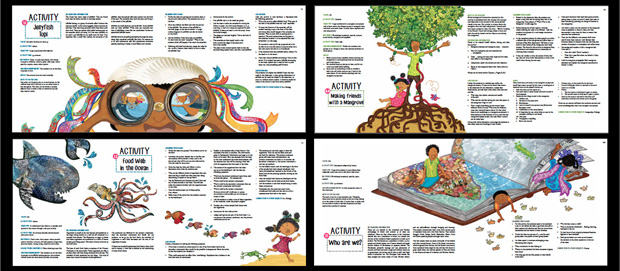
The Treasured Island book design showing the illustrations for the activities.
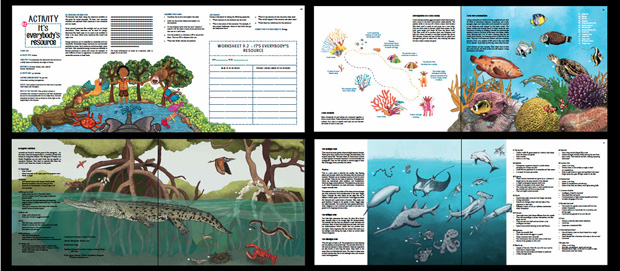
The treasured Islands Book Design showing the page layouts and illustrations for some of the lessons.
Studio: Illustration and Visual Narratives
Illustration is a means of visual expression and a contemporary visual, constantly evolving form of expression. Studios in Illustration and Visual Narratives provide an opportunity to engage with creative idea, work collaboratively and critically examine the concepts before reaching final outcome.
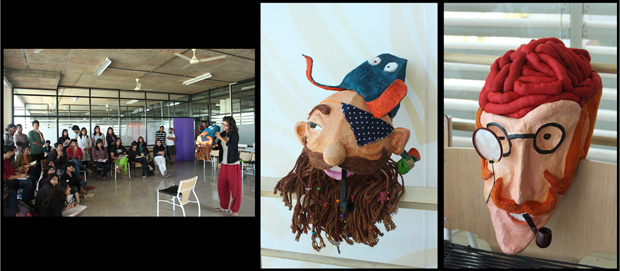
Based on individual concepts, students develop personas and develop 3D models using paper maché.
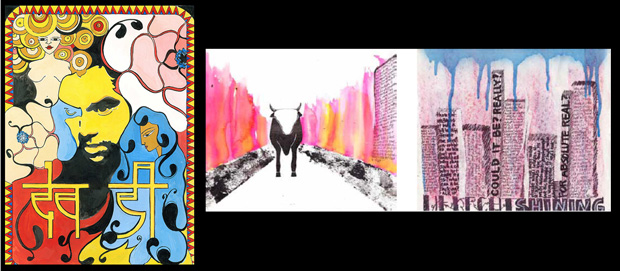
Illustrations that reference historical art movements or respond to the students immediate environment.
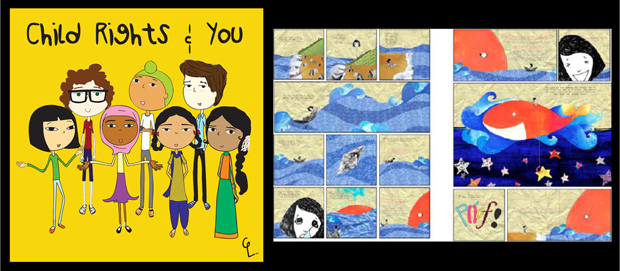
Visual narratives to communicated social issues.
Studio: Information Design and Interaction Design
Data visualization, experience design and User Interaction/Interface design are some of the studios taught in this area. Students learn to navigate through data, collate it, analyze and organize it and then visualize to communicate massive chunks of information in coherent and visually engaging manner. Interaction and interface design exposes the students to be fluent in the digital media while using design thinking and design process to arrive at the most intuitive navigation and dissemination of information on the screen.
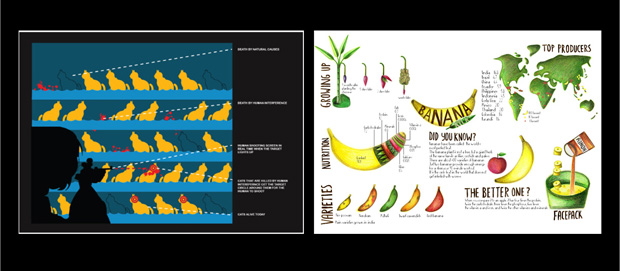
Students work on Information Graphics as they research, gather and filter data to then present it visually.
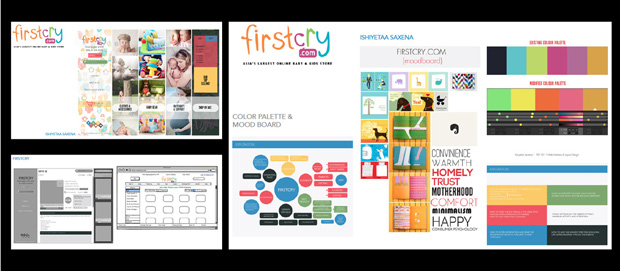
Website design begins with understanding the service/product, understanding the user and then preparing the wireframes that determine the navigation that finally aids the visual design of the website.
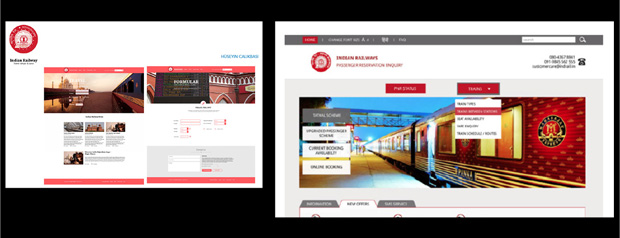
Redesigning website for a large transactional platform can be a huge challenge as it was during this assignment to redesign website for Indian Railways.
